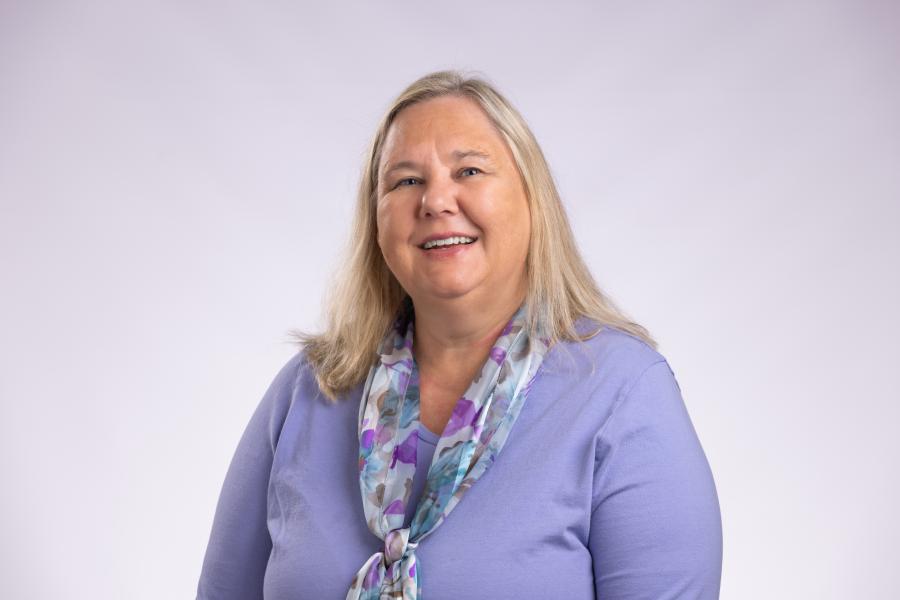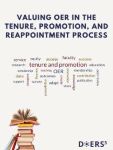OER and Tenure and Promotion
One of the biggest barriers to working with open educational resources (OER) is the lack of recognition for these activities in tenure and promotion (T&P) processes.[1][2][3] This page highlights how OER activities—adopting, adapting and creating—can fit within existing tenure expectations and offers ideas for updating departmental policies to reflect their value.
Academic freedom and OER
OER empowers faculty to shape course materials to match the needs of their students and curriculum. With OER, you can:
- Reflect student demographics and lived experiences.
- Incorporate equity, diversity and inclusion (EDI) examples and remove bias often found in commercial textbooks.
- Design courses around your teaching goals, not a publisher’s textbook.
Professional competence
OER work can provide strong evidence of teaching effectiveness and professional growth. Ways to document this impact:
- Survey students on how OER affected their learning.
- Compare course grades and DFWI (drop, fail, withdrawal, incomplete) rates before and after OER adoption.
- Revise OER materials to meet student needs.
- Connect OER use to curricular innovation and program development.
Student success and retention
OER directly supports student success by removing financial barriers to learning. Studies consistently show that students with access to free, high-quality course materials are more likely to stay enrolled, succeed academically and progress toward graduation. In today’s environment of declining enrollments and increased emphasis on retention, OER adoption is a powerful demonstration of faculty commitment to student success.
Professional recognition
Scholarship of teaching and learning
OER projects provide opportunities for teaching innovation, assessment and publication. Ideas for scholarship:
- Integrate OER into active and interactive learning strategies.
- Adapt OER for specific teaching contexts.
- Publish or present findings.
Advancement of Knowledge
Creating or revising OER can count as scholarly or creative activity. Evidence may include:
- OER grants awarded (e.g., WMU OER Grants).
- Adoption of your materials at other institutions.
- Peer review of your OER.
"The Case for OER as the Advancement of Knowledge/Creative Expression" by Dierking, Amber; Ruen, Matt; and Schlicker, Steven.
Professional Service
OER engagement often extends into service. Examples include:
- WMU OER Task Force – Supporting adoption and creation of OER to reduce student costs. (Contact Michele Behr, scholarly communications and OER librarian, for details.)
- Peer Review – Many OER are peer reviewed. Contribute your expertise through opportunities such as the Open Textbook Library. (Contact Michele Behr for more information.)
- Support Letters – Gather statements from students, colleagues or professional groups who have used or benefited from your OER work.
Build Your Case
When framed within the categories of teaching, research and service, OER contributions show clear evidence of faculty impact and innovation.
OER work not only supports student success—it also strengthens your professional record for tenure and promotion.
Resources
"Valuing OER in the Tenure, Promotion, and Reappointment Process"
This book of case studies is meant to aid faculty, librarians, administrators and staff members as they attempt to make their work or others' work on open educational resources (OER) matter in the tenure, promotion, and reappointment process at their institutions.
References
- Belikov, O. M., & Bodily, R. (2016). Incentives and barriers to OER adoption: A qualitative analysis of faculty perceptions. Open Praxis, 8(3), 235–246.
- Todorinova, L., & Wilkinson, Z. T. (2020). Incentivizing faculty for open educational resources (OER) adoption and open textbook authoring. The Journal of Academic Librarianship, 46(6), 102220.
- Henderson, S., & Ostashewski, N. (2018). Barriers, incentives, and benefits of the open educational resources (OER) movement: An exploration into instructor perspectives. First Monday, 23(12).

Need help getting started with OER?
Want to learn more about OER?
Licensed under Creative Commons
This work is licensed under a Creative Commons Attribution-ShareAlike 4.0 International License. Feel free to reuse, remix or republish. Please credit the authors for their work.
Created by: Michele D. Behr and Angela Brcka



